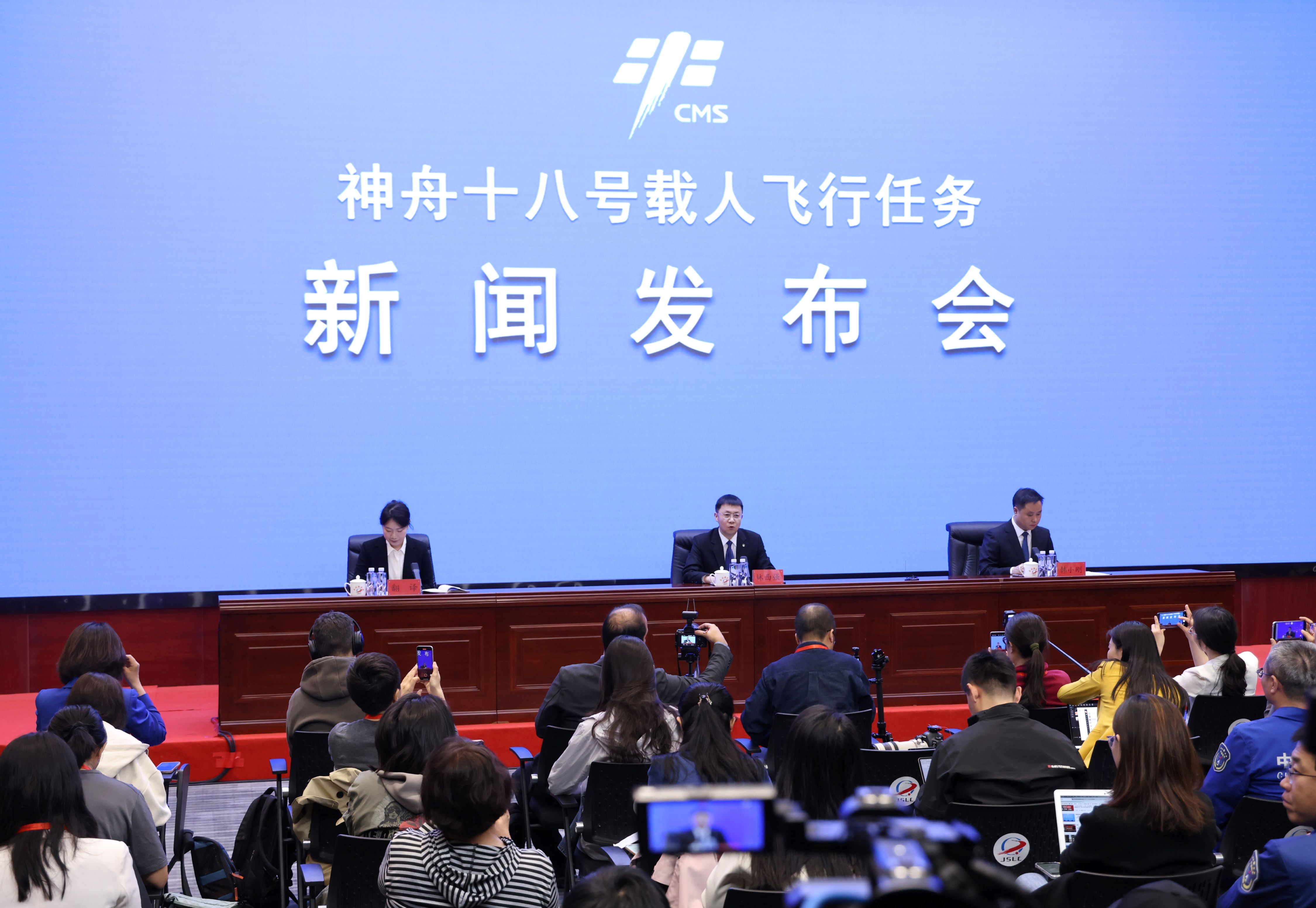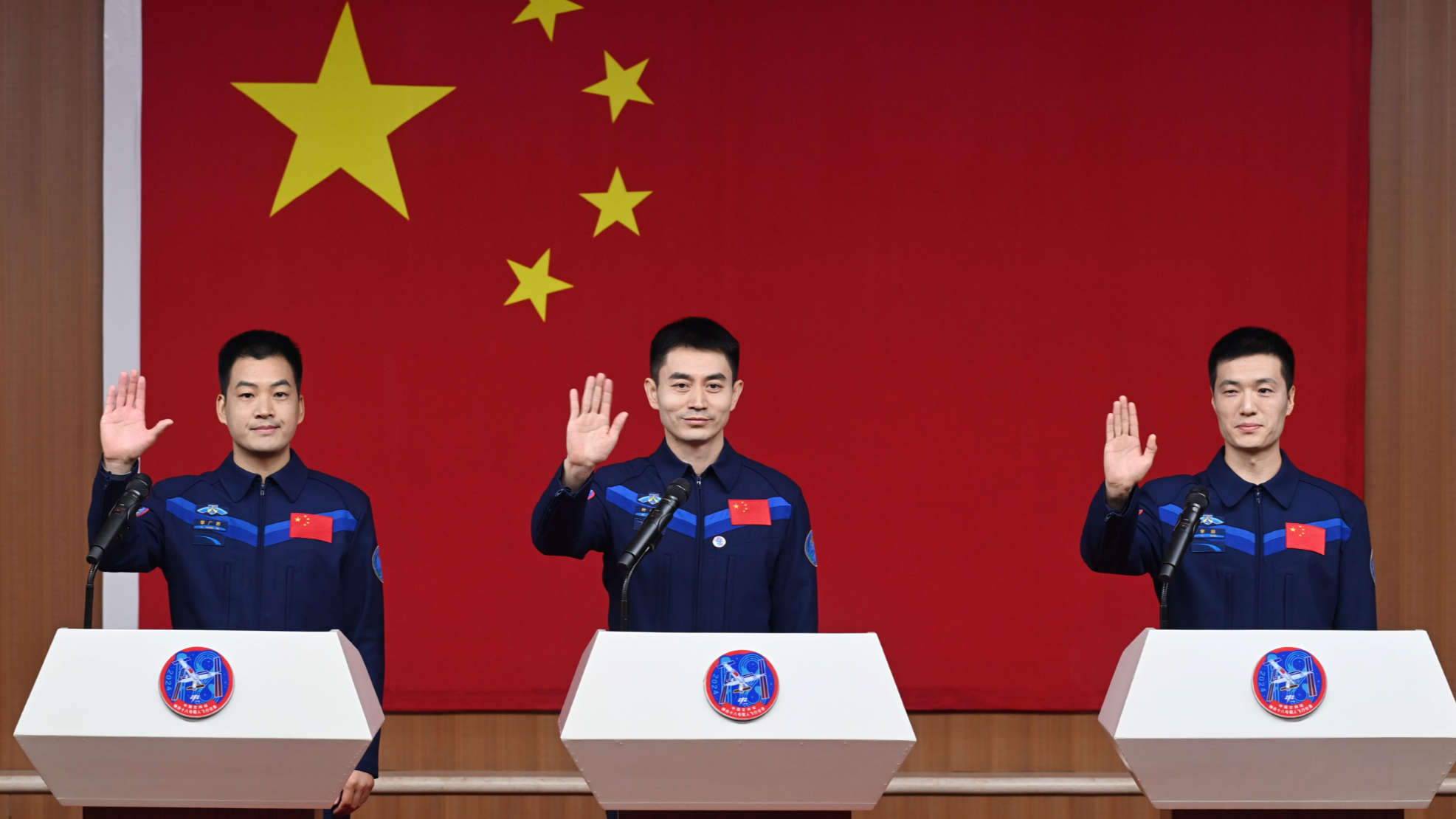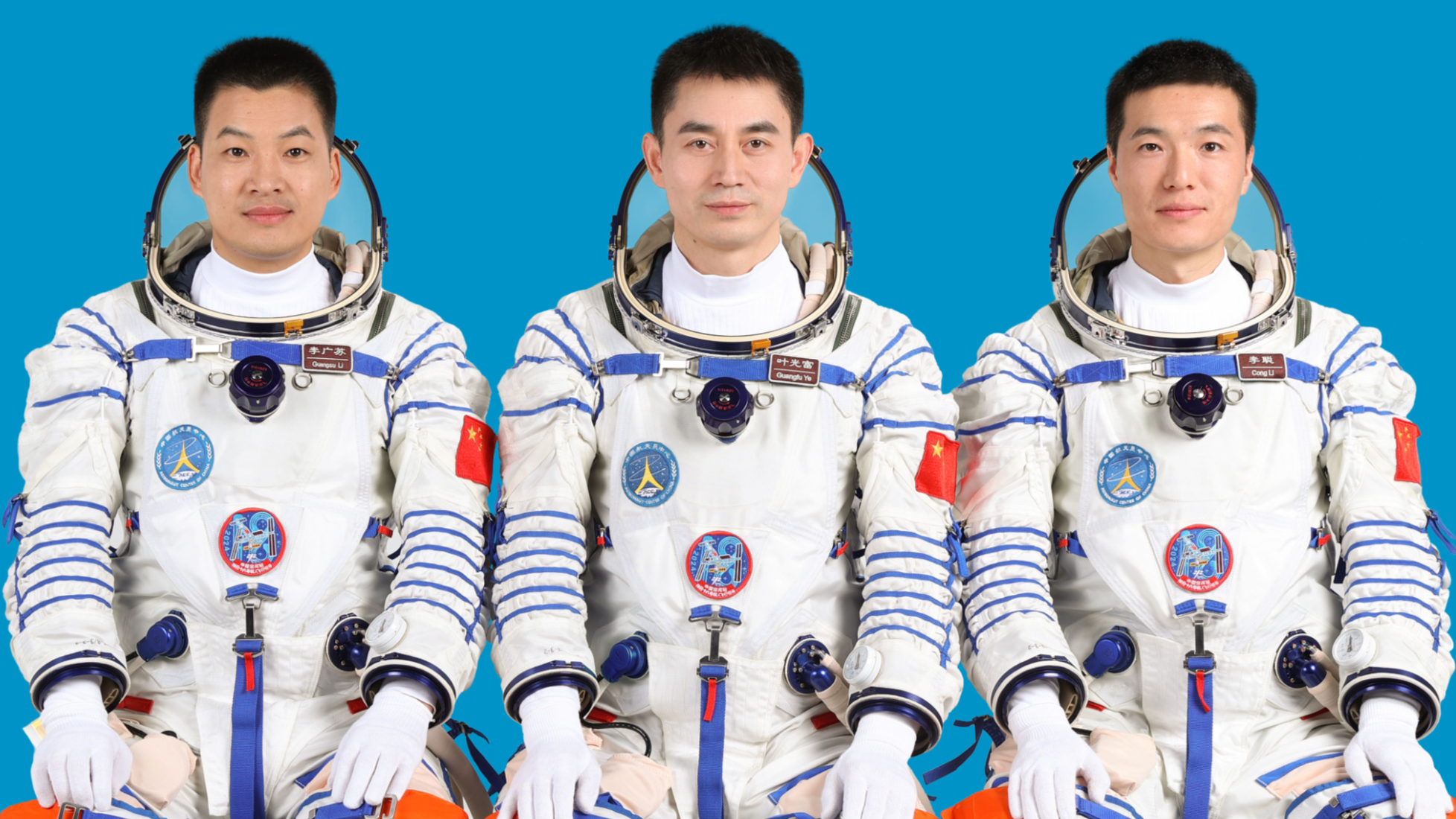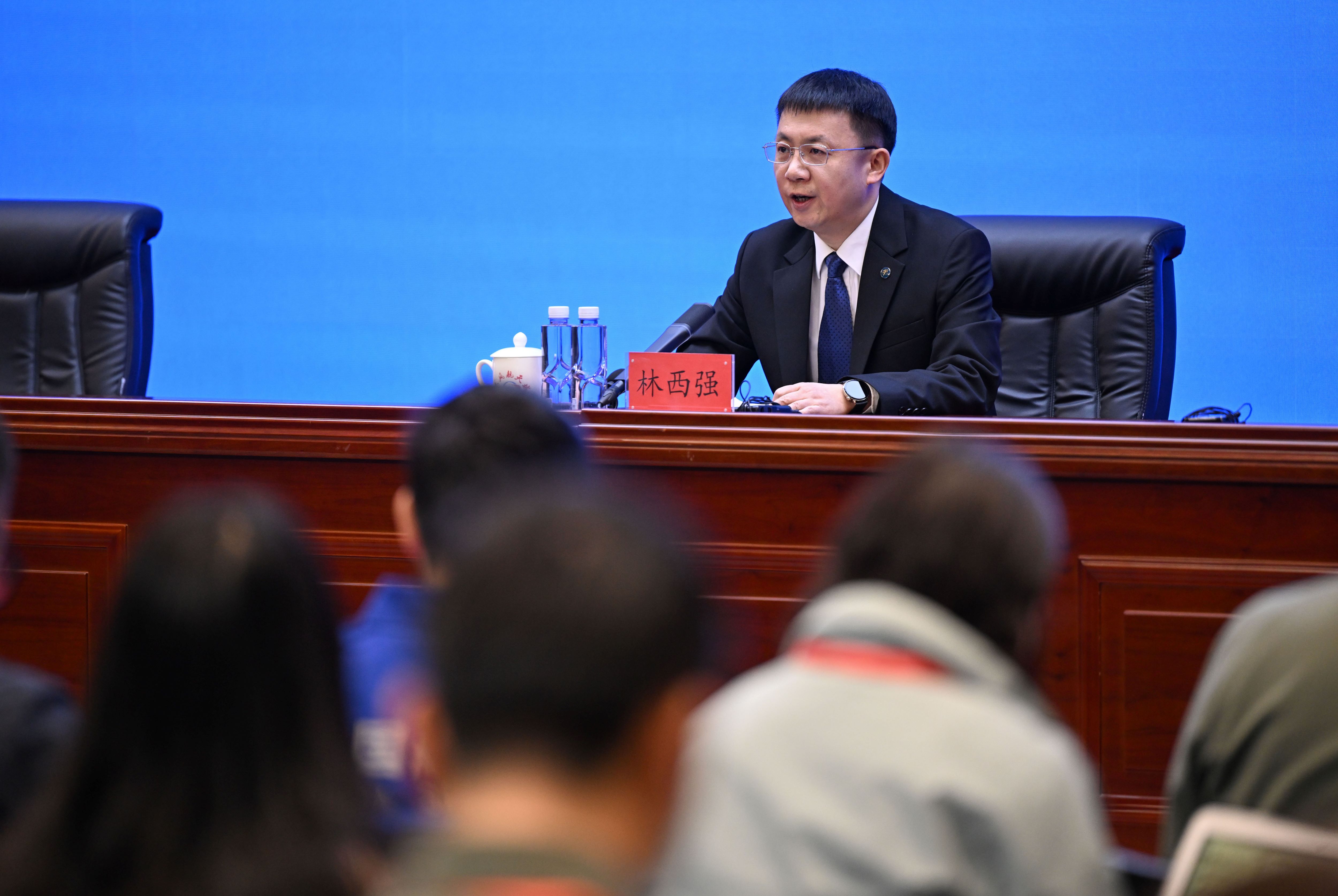
JIUQUAN - The Shenzhou ⅩⅧ crewed spaceship is scheduled to be launched at 8:59 pm Thursday (Beijing Time) from the Jiuquan Satellite Launch Center in northwest China, announced the China Manned Space Agency (CMSA) on Wednesday.
The spaceship will carry three astronauts -- Ye Guangfu, Li Cong and Li Guangsu -- to carry out the Shenzhou ⅩⅧ spaceflight mission, and Ye will be the commander, said Lin Xiqiang, deputy director of the CMSA, at a press conference.
The three astronauts met the press on Wednesday morning.
This will be the second space flight mission for Ye, who was a crew member of the Shenzhou ⅩⅢ mission from October 2021 to April 2022. Li Cong and Li Guangsu, among the third batch of Chinese astronauts, are both newcomers to space.
All three Shenzhou ⅩⅧ astronauts are the post-1980s generation.
"My two crew members and I, as well as the entire space mission team, are fully prepared and confident (in our ability) to complete this space flight mission," said Ye.

Shenzhou ⅩⅧ is the 32nd flight mission of China's manned space program, and the third manned mission during the application and development stage of China's space station.
READ MORE: Shenzhou XVIII crewed spaceship ready for launch
The crew will stay in orbit for about six months, and they are scheduled to return to the Dongfeng landing site in north China's Inner Mongolia autonomous region in late October this year.
After entering orbit, the Shenzhou ⅩⅧ spaceship will perform a fast automated rendezvous and docking with the radial port of the space station core module Tianhe in about 6.5 hours, forming a combination of three modules and three spacecraft, Lin said.
READ MORE: China awards medals to Shenzhou XVI astronauts
During their stay in orbit, the Shenzhou ⅩⅧ crew will witness the arrival of the Tianzhou-8 cargo craft and Shenzhou ⅩⅨ crewed spaceship, Lin said.
The crew will utilize the scientific experiment cabinets and extravehicular payloads to carry out more than 90 experiments in the fields of basic physics in microgravity, space material science, space life science, space medicine and space technology, Lin said.
The country's first in-orbit aquatic ecological research project will also be implemented during the mission. Using zebrafish and goldfish algae to establish a self-cycling aquatic ecosystem in orbit, the project aims to make to a breakthrough in the cultivation of vertebrates in space, Lin noted.

The world's first in-orbit stem cell study on the plant's stem tips will be made to explore plant evolutionary adaptation to gravity and provide theoretical support for space cropping, said Lin.
The Shenzhou ⅩⅧ astronauts will carry out two to three extravehicular activities (EVAs), and implement six cargo outbound deliveries via the station's cargo airlock module.
During the EVAs, the astronauts will install space debris protection reinforcements for extravehicular piping, cables and critical equipment, and carry out extravehicular inspections, as appropriate, to further ensure the safety of the space station, Lin said.
The space station combination is now in a stable status with all equipment functioning well. Product qualities of the Shenzhou ⅩⅧ spaceship and the Long March-2F carrier rocket are under control, Lin added.
The Shenzhou ⅩⅧ crew is in good condition, while the ground system facilities are in stable operation. All preparations for the launch have been completed, Lin said.
READ MORE: China launches new remote sensing satellite
The launch will use a Long March-2F carrier rocket, which will be filled with propellant soon.
The Shenzhou ⅩⅦ crew is scheduled to return to the Dongfeng landing site on April 30 after completing the in-orbit work handover to the Shenzhou ⅩⅧ crew, he added.

Lin Xiqiang said that China has essentially completed the selection of payload specialists in the Hong Kong and Macao special administrative regions for the fourth batch of astronauts
During the press conference, the CMSA also announced that the selection of the fourth batch of Chinese astronauts is about to be completed soon.
They will work with other active astronauts to carry out the follow-up space station missions and to realize the country's manned lunar landing, said Lin.
ALSO READ: China's Shenzhou XVI crew members share space stories
Lin said that China has essentially completed the selection of payload specialists in the Hong Kong and Macao special administrative regions for the fourth batch of astronauts, and relevant information will soon be officially released.
Scientific research institutions in Hong Kong and Macao have proposed a group of new space science and application projects, such as a project on high-resolution global greenhouse gas detection, which hopefully will be carried out at the country's space station Tiangong in the future, according to Lin.
China selected 14 and seven astronauts from air force pilots in 1998 and 2010 respectively. In 2020, it completed the selection of the third batch of 18 astronauts including space pilots, flight engineers and payload specialists.


